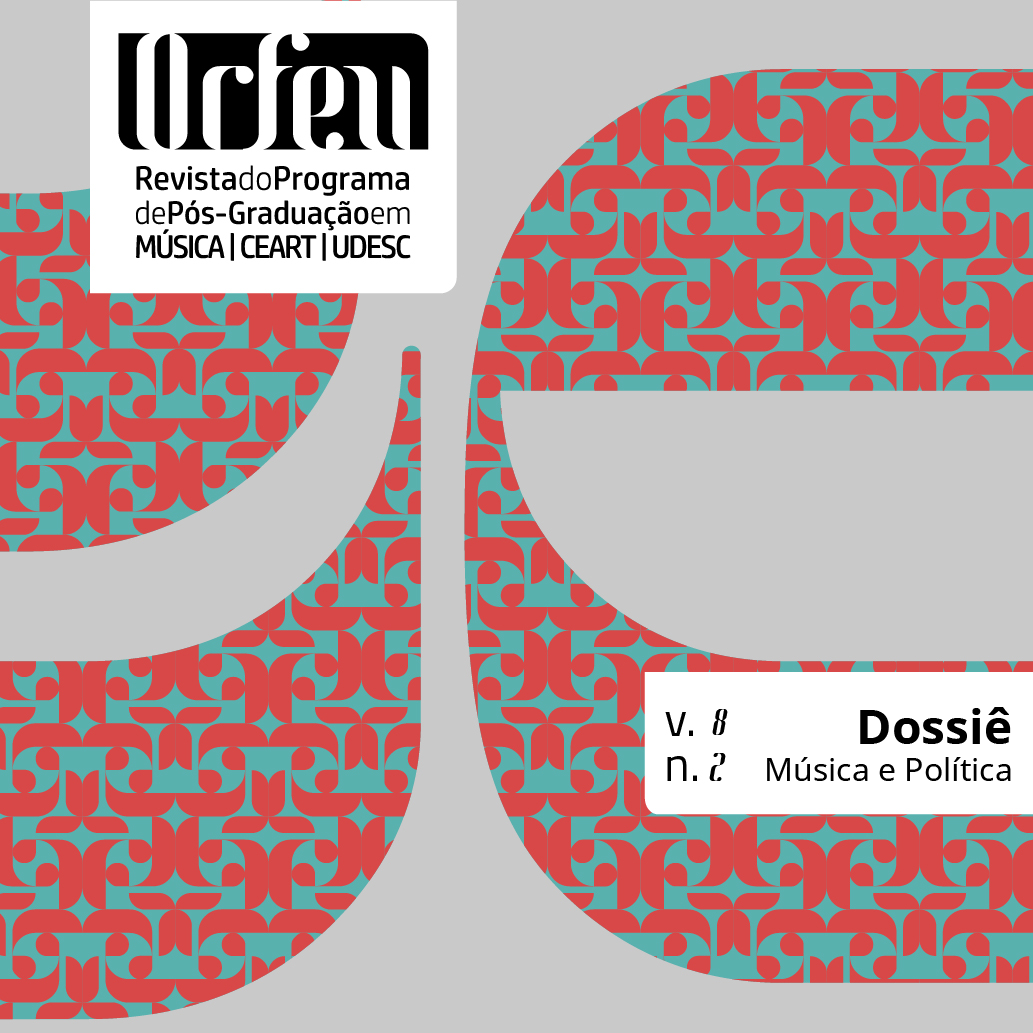Singing with the foodies
DOI:
https://doi.org/10.5965/2525530408022023e0301Keywords:
vocalise, coral infantil, canção infantil, voz infantilAbstract
In this work, the book “Cantando com as comilanças” is described and analysed, from the point of view of his contributions to field of literature on children´s musical-vocal development. Thus, the compositional characteristics, as well as its vocal technical objectives are identified in the thirteen vocal exercises, created by Juliana Melleiro. They are: expand children´s vocal range, explore facial resonators, develop different zones of textual articulation and enable vocal flexibility.
Downloads
References
CHAN, Thelma. Divertimentos de corpo e voz. São Paulo: T. Chan, 2001.
DWYER, Ruth. Harmony in Sequence. In: LECK, Henry; JORDAN, Flossie. Creating Artistry Through Choral Excellence. 1 ed. Milwaukee: Hal Leonard, 2009.
GOULART, Diana; COOPER, Malu. Por todo canto: exercícios de técnica vocal para o canto popular. Rio de Janeiro: D. Goulart, 2000.
MARSOLA, Mônica; BAÊ, Tutti. Canto uma expressão: Princípios básicos de técnica vocal. São Paulo: Irmãos Vitale, 2001.
RHEINBOLDT, Juliana Melleiro; SINI, Jefferson; CAVALLARI, Karelin. Cantando com as comilanças. Campinas: Ed. dos Autores, 2023.
SCHNAPPER, Laure. Ostinato. In: SADIE, Stanley (Ed.). The New Groove: Dictionary of music and musicians. 2ed., vol. 18. New York: Oxford University Press, 2001.
ZANDER, Oscar. Regência coral. Porto Alegre: Movimento/Instituto Estadual do Livro, 1979.
Downloads
Published
How to Cite
Issue
Section
License
Copyright (c) 2023 Débora Andrade

This work is licensed under a Creative Commons Attribution 4.0 International License.
Authors who submit their manuscripts to be published in this journal agree to the following terms:
1. Authors retain the copyright and grant to the journal the right of first publication, whilst simultaneously permitting their work to be licensed under the Creative Commons License Attribution, which allows the sharing of work with recognition of the authorship and initial publication in this journal.
2. Contributions in this journal are open access; this means they are based in free use, and non-commercial applications.






